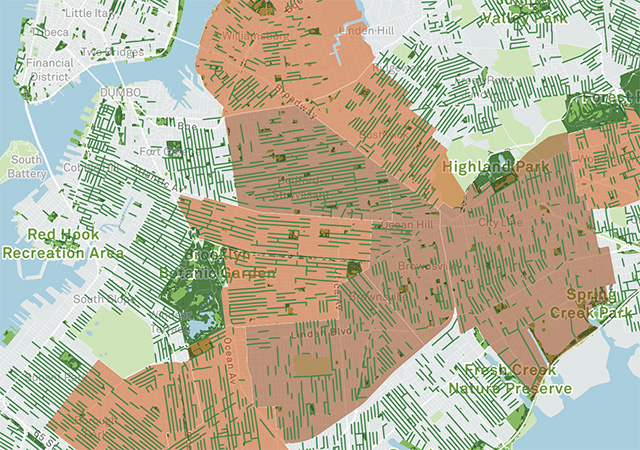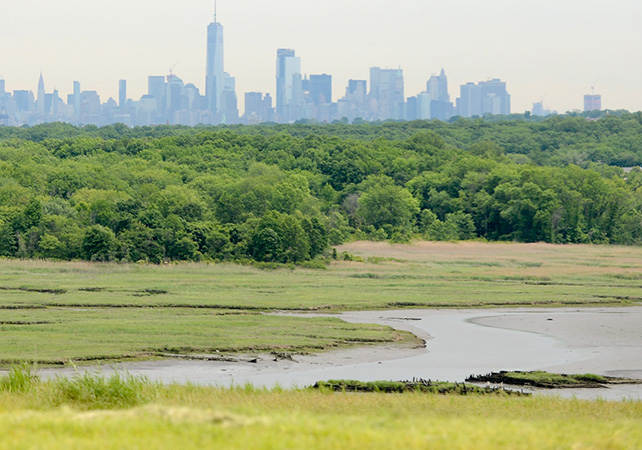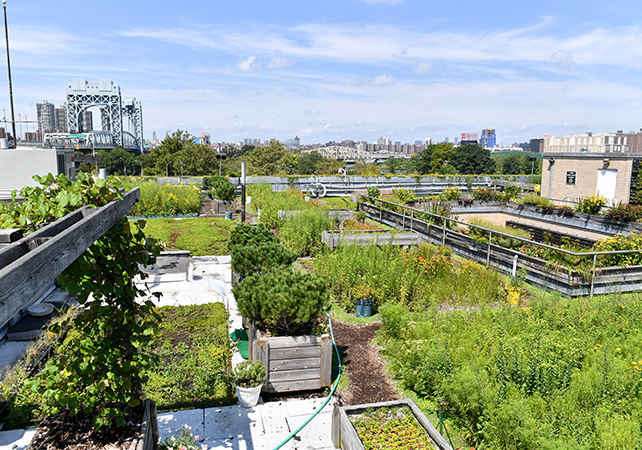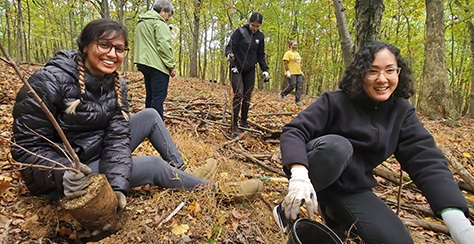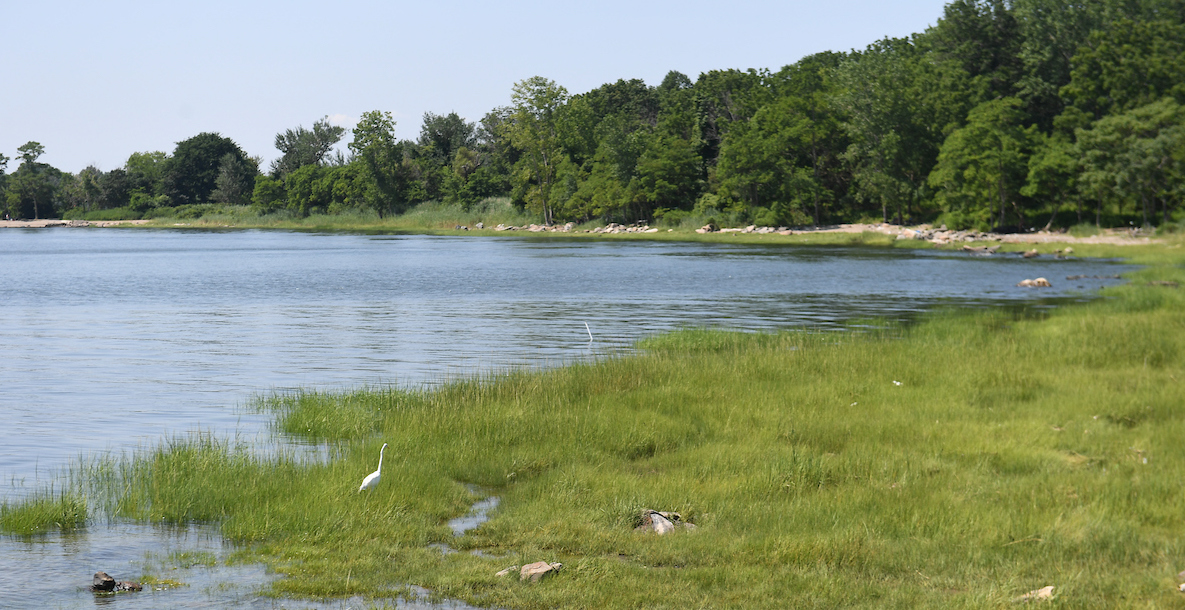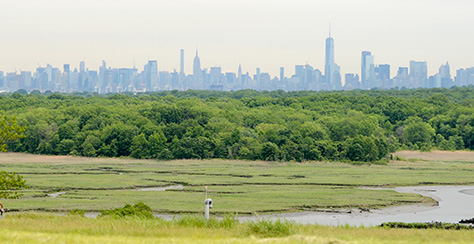How NYC Parks Fights Climate Change: Cooling Our City
The warm temperatures of a summer in New York City may set the scene perfectly for relaxing at the park or on the beach. But excessive heat and humidity can also be dangerous, potentially causing heat illness and even death.

Because of climate change, heat in New York City is expected to intensify in coming years. Global climate models project that by the 2050s, NYC’s average annual temperature will increase by up to 5.7 degrees and the number of days above 90 degrees will double. Heat waves will happen more often; they will be hotter and last for more days.
What’s more, New York City often experiences even warmer temperatures than areas outside the city because of a phenomenon called the urban heat island effect. Due to the heat island effect, daytime temperatures in urban areas are about 1-7°F higher than outside the city. This effect is caused by the presence of the city’s sidewalks, roads, buildings, and roofs. These human-made surfaces absorb more solar energy and contain less moisture than greenspaces. These surfaces can release this energy back into the environment after sunset, so even nighttime temperatures stay warm.
What We’re Doing
In addition to adding and maintaining cooling features in our parks and playgrounds, such as spray showers, outdoor pools, and drinking fountains, we take a number of actions to keep the city cool and combat the heat island effect.
Expanding NYC’s Tree Canopy Cover
Trees are our “natural air conditioners” – they can cool air temperatures and provide shade on hot days. At NYC Parks, we prioritize planting and caring for trees in areas that need them most – specifically neighborhoods that are most vulnerable to heat due to low levels of tree canopy cover and other building and landscape characteristics. In 2022, NYC Parks announced we will be expanding tree plantings across the five boroughs -- up to 20,000 trees will be planted in parks and on sidewalks every year until at least 2026!
Check out the Cool It! NYC Map to explore how we're cooling communities with heat vulnerability.
Preserving Landscaped and Natural Areas
Natural areas (such as forests and salt marshes), as well as landscaped parks, provide shade and absorb less solar energy than human-made materials. The vegetation in these areas even cools the surrounding air as water vapor is released from plants in a process called transpiration. As of 2022, through our Forever Wild program, we have protected and preserved more than 12,300 acres of ecologically valuable lands in the five boroughs and our horticulture team maintains more than 9,000 garden areas and lawn spaces throughout the city.
Freshkills Park on Staten Island was a landfill, now it is becoming one of the biggest parks in New York City and a haven for ecological diversity.
Adding Green Roofs
We also bring vegetation to our rooftops! We maintain more than 250,000 square feet of green roofs across the city. Green roofs help reduce the city’s heat island effect, reduce buildings’ energy costs, and can even feature vegetable and herb farms, hydroponic towers, and honeybee hives!
Since 2007, our Citywide Services Complex Green Roof at Randall's Island has served as a model for sustainable design and a living example of climate action. Schedule a free tour!
This 45,000-square-foot green roof is the most biodiverse green roof in the world and the only green roof to feature dozens of unique green roof systems side-by-side!
Creating Cool Roofs
Another way to make a roof greener is to paint it white! A "cool roof" features a highly-reflective white coating that reflects most of the sun’s energy back into the atmosphere, rather than absorbing it as do traditional dark-colored roofs. As of 2022, Parks has created more than 920,000 square feet of cool roof surfaces. Cool roofs can be found on over 300 NYC Parks buildings, including recreation centers, nature centers, and park houses.
Explore More Ways NYC Parks Fights Climate Change
In addition to adding park features and greenery to lower the heat index in New York City, we're also tackling other effects of climate change that impact our air quality, waterways, flood-prone communities, and wildlife. Learn more:

Cleaning Our Water and Protecting Coastal Communities
Explore how we're keeping our waterways clean to provide our city with cleaner water, beaches, and habitat for aquatic wildlife, and examine how we're making our shorelines more resilient in the face of sea leave rise.
Learn more about how we're protecting
waterways, shorelines, and flood-prone communities
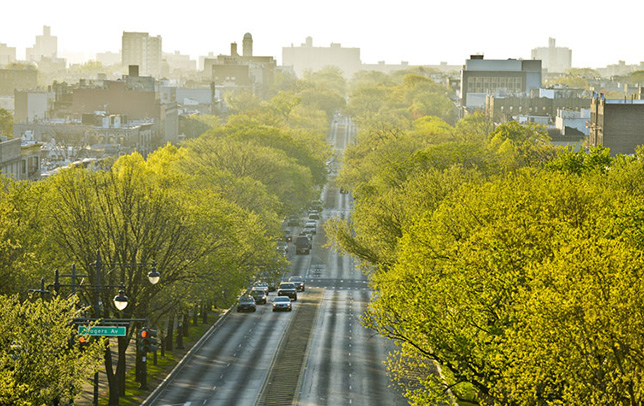
Cleaning Our Air
Our trees and other plantings play a vital role in removing harmful pollutants. Delve into the science behind our plantings that improve air quality and discover how we're shifting to renewable energy to help keep the air clean.
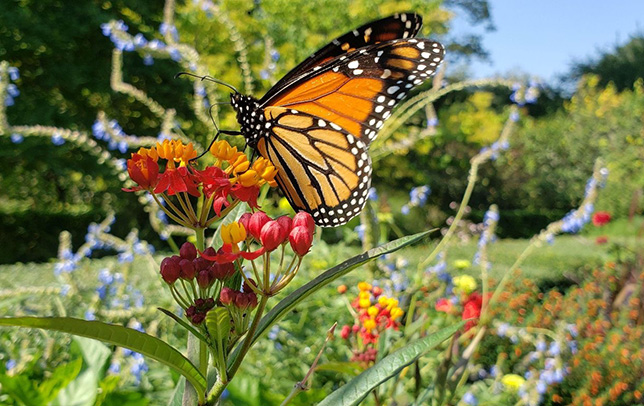
Restoring and Protecting Our Ecosystems and Wildlife Habitat
Both development and climate change have dwindled our natural resources over time, leaving our city vulnerable. Examine how we're restoring these vital greenspaces and reinforcing how they protect us.
Learn more about how we're
restoring and protecting our
ecosystems and wildlife habitat
Features
Steps You Can Take to Fight Climate Change
Learn how you can volunteer with us to restore natural areas and discover how you can join the fight on your own by caring for your street tree, growing pollinator-friendly gardens, and reducing your carbon footprint!
Ecosystems in New York City Parks
Take a closer look at our forests, wetlands, and meadows, how we care for them, and how they benefit the health of the city.
Sustainability at Parks
Explore more ways we’re making our city more resilient and how we’re incorporating climate action into how we care for and build parks.
Last updated: September 22, 2022

